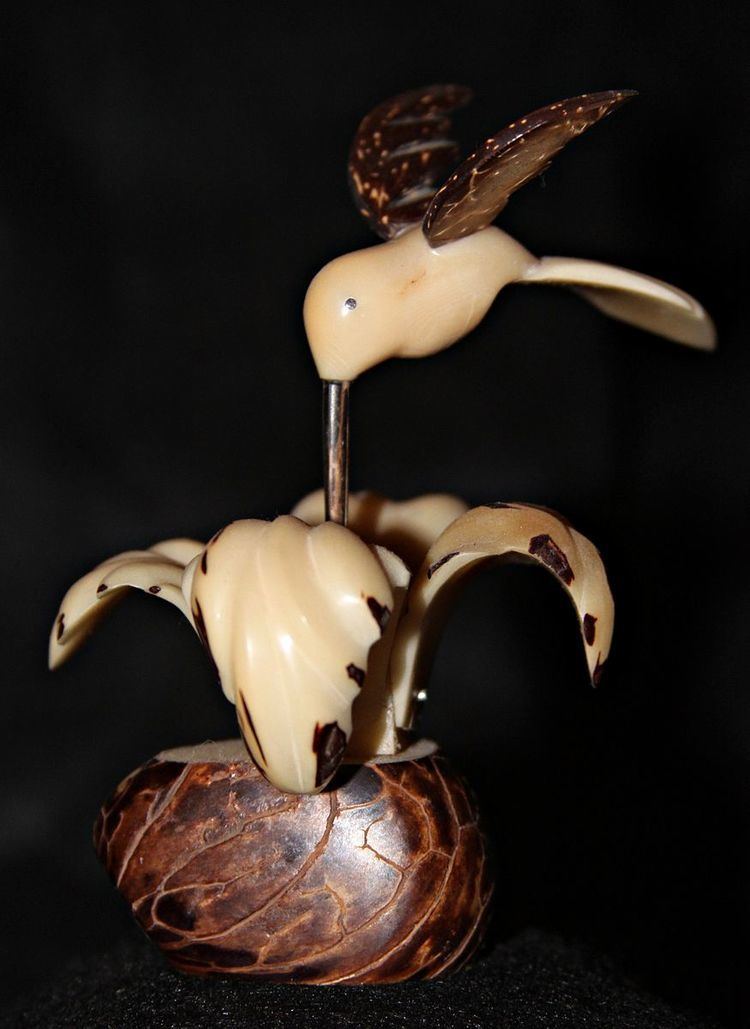 | ||
Vegetable ivory or tagua nut is a product made from the very hard white endosperm of the seeds of certain palm trees. Vegetable ivory is named for its resemblance to elephant ivory. Species in the genus Phytelephas, native to South America, are the most important sources of vegetable ivory. The seeds of Metroxylon amicarum, from Micronesia, and Hyphaene ventricosa, from Africa, are also used to produce vegetable ivory.
The material is called corozo or corosso when used in buttons.
Uses
An early use of vegetable ivory, attested from the 1880s, was the manufacture of buttons. Rochester, NY was a center of manufacturing where the buttons were "subjected to a treatment which is secret among the Rochester manufacturers", presumably improving their "beauty and wearing qualities." Before plastic became common in button production, about 20% of all buttons produced in the USA were made of vegetable ivory.
Vegetable ivory is naturally white with a fine marbled grain structure. It can be dyed; dying often brings out the grain. It is still commonly used in buttons, jewelry, and artistic carving. Many vegetable ivory buttons were decorated in a way that used the natural tagua nut colour as contrast to dyed surface, because the dye did not penetrate deeper than the very first layer. This also helps identify the material.
